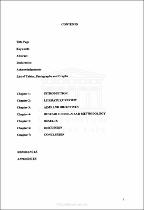| dc.description.abstract | This study investigated the common sites and complications associated with oral and perioral piercings, and the oral hygiene practices of people with piercings (piercees)' The attitude and behaviour of piercers towards the prevention and control of complications was also reviewed. The piercees completed a self-administered questionnaire, and were visually examined for sites of piercings and complications, and l0 piercers took part in an interviewed questionnaire. The completed questionnaires were coded, and the responses entered into a spreadsheet for analysis. Of the 126 participants (107 females and 19 males; ages ranging from under-16 to 24) 88.10/o had a tongue piercing, lg.}4yo had a lip piercing, and 7.94Yo had both. One-hundred-and-seven (84.92%) had their piercing at a piercing or tattoo parlour, thirteen (10.31%) had the piercing procedure provided by a doctor or dentist, three went to a hairdressing salon, while one had a friend do the piercing and one individual did his own piercing. The most common post-procedure sequelae were pain (69.05%), swelling(52.38%) and difiiculty eating, speaking and swallowing (70.63%). Post-piercing complications were reported by 17.56%o (n:22) of the sample, and these included chipping of teeth (n:13), gingival recession (n: 2), damage to tongue and palate (n : 3), sore gums (n : l), and sensitivity of teeth (n: l). Those individuals who experienced chipping of teeth, had tongue piercings, and the gingival recession occurred in subjects with labial piercings or labrettes. These findings suggest that there is an association between piercings of the tongue and damage to teeth and piercing of the lower lip and gingival recession. All the piercers reported adequate cross-infection measures, and informed piercees of post-piercing care. It is apparent from the present study that few people had serious problems related to lip and tongue piercings, notwithstanding the damage to hard and soft tissue, however, the providers of these procedures, and dental personnel should inform prospective piercees of the potential risks' | en_US |

